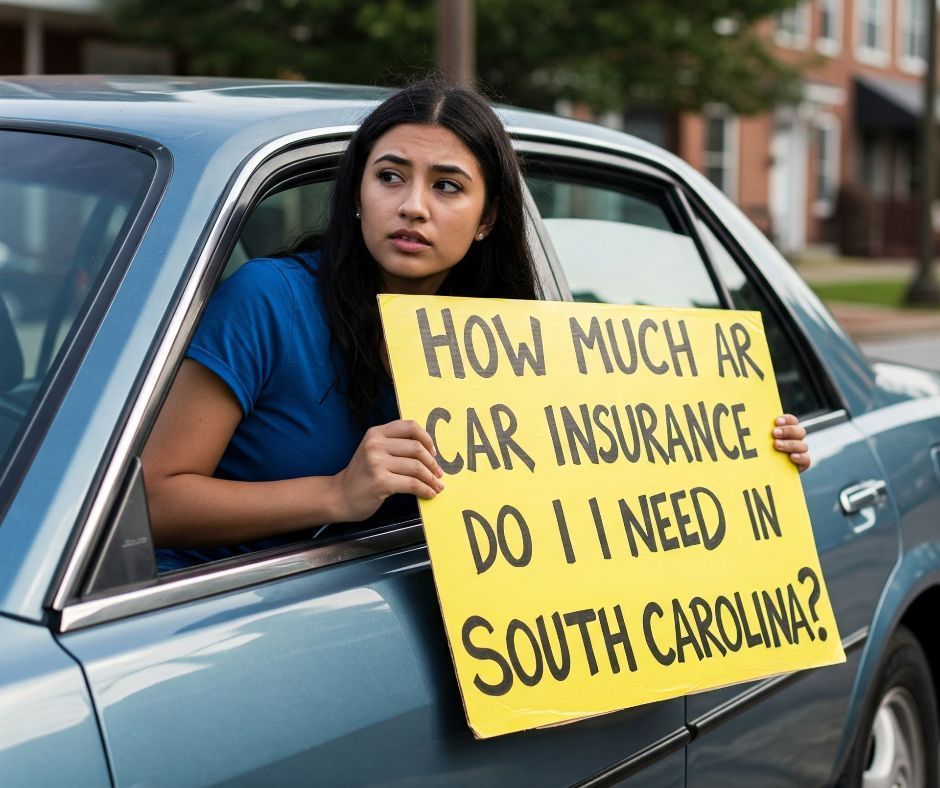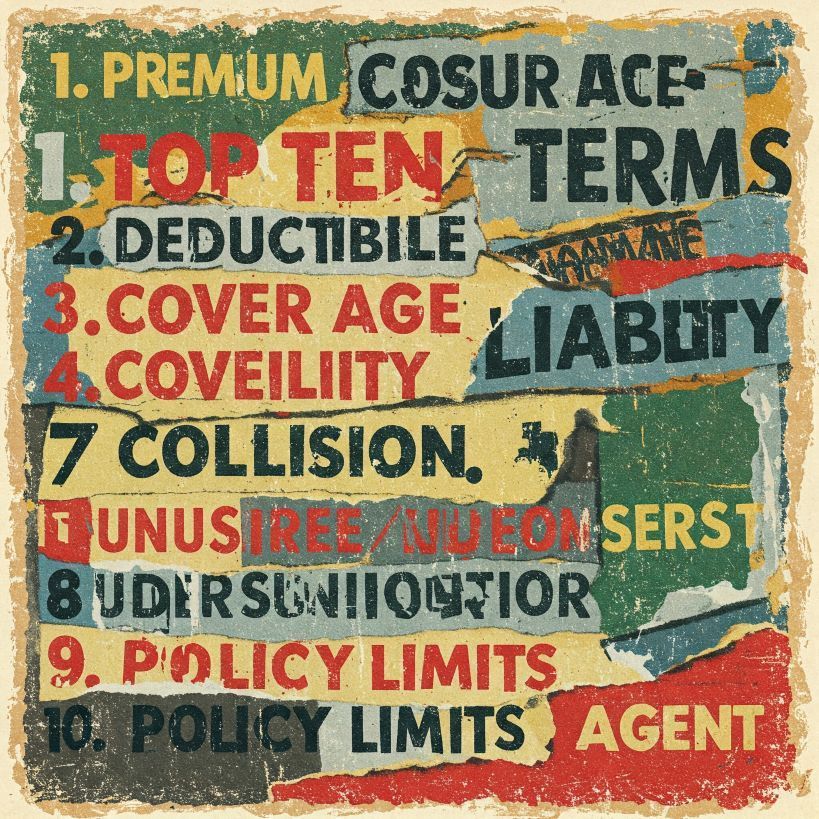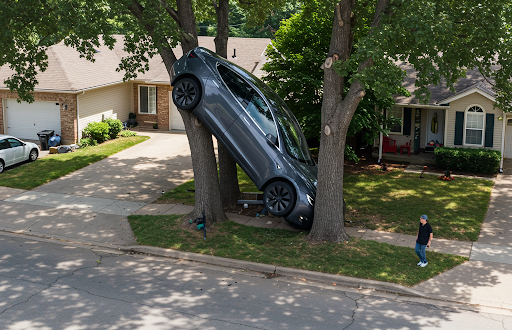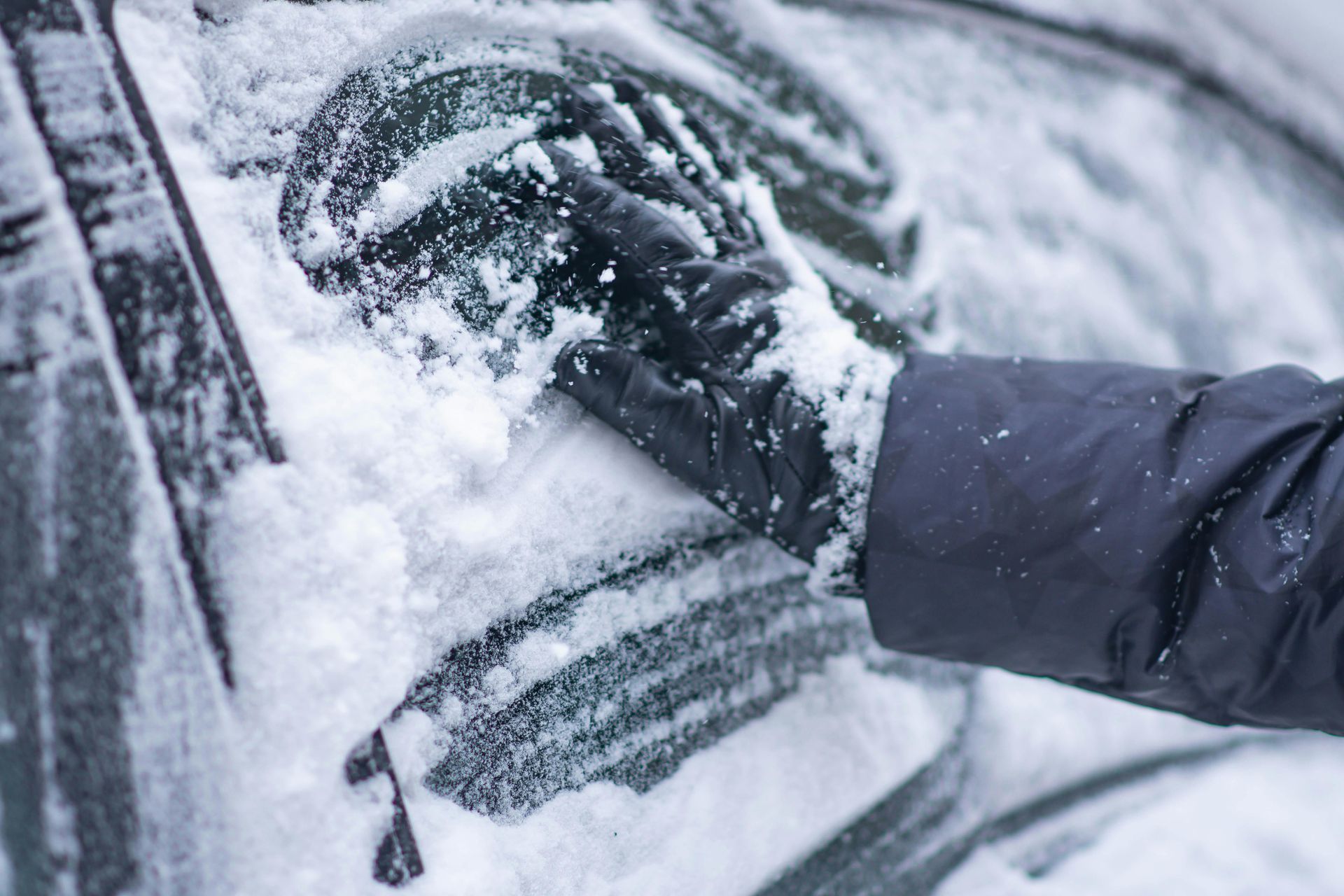News
In the news

By Doug Stockman
•
April 1, 2025
Alright, groovy cats and kittens! Buckle up your bell-bottoms, 'cause we're about to take a far-out trip down the cosmic highway of auto insurance! We're talkin' about the wild, wonderful world of saving your hard-earned bread on that groovy ride of yours. Far Out, Man! Unraveling the Mystical Maze of Auto Insurance Discounts (and Avoiding a Pricey Freak-Out) Let's face it, dig? Adulting can be a real mind-bender. You got bills piling up like a mountain of tie-dye, responsibilities that weigh you down, and that nagging feeling that you've misplaced your peace sign (or your keys, man, again!). And then there's the whole scene with auto insurance. It's like a financial hug you didn't ask for, but hey, you gotta roll with it, right? But don't let those insurance company vibes bum you out, my friend! In the midst of all that jargon and those confusing clauses that make your head spin like a psychedelic record, there's a glimmer of sunshine, a little patch of daisies in a field of paperwork: DISCOUNTS! Yeah, those magical little reductions that can make your monthly payment feel less like a cosmic rip-off and more like a mellow groove. Insurance companies have cooked up more discount categories than there are flavors of organic granola. So, let's take a humorous (and maybe a little cynical, man, you know how it is) look at some of the most far-out ones: The "Keep Your Wheels on the Ground, Dude" Discount: This one's pretty straight-up, man. Don't crash your groovy machine, don't zoom around like a speed freak, and generally don't act like a hyperactive squirrel hopped up on too much coffee behind the wheel, and you might just get a little pat on the back (and a discount!). It's like being rewarded for... not being a total menace to society. Groovy, baby, groovy. The "More Wheels, More Savings, Man!" Discount: Dig this, if you're lucky enough to own more than one set of wheels, they think you're some kind of responsible guru capable of juggling multiple things at once. Or maybe it just means they can squeeze a few more clams out of ya. Either way, if you've got a fleet of vintage vans (or even just two righteous rides), you might save a few bucks. Just don't let 'em all break down at the same time, man, that'd be a real bummer. The "Bundle It Up, Baby!" Discount: Ah, the classic "buy more, save more" trip. If you've got your home insurance, your pad insurance, bundling it all with your auto insurance can often lead to some sweet savings. It's like the insurance company saying, "Hey, you already trust us with your crib (and maybe your sanity), why not your wheels too?" Far out! The "Far Away, Far Out" Discount: If your little chickadee is off at college and their wheels are hangin' at home, you might score a discount. Does this mean they're less likely to get into fender benders 'cause they're surviving on bean burritos and questionable cafeteria grub? Maybe, man, maybe. The "Keep Your Pad Safe, Keep Your Pocket Happy" Discount: Got a fancy alarm system that probably just annoys the neighbors more than it scares off a determined car thief? Well, you might get a discount for that. It's like the insurance company saying, "We appreciate your attempt to make our job a little more interesting." The "Smarty Pants on the Road" Discount: This one's for the brainy bunch, the bookworms, the ones who actually crack open a textbook. If you're a student with decent grades, you might qualify for a discount. Apparently, good grades correlate with responsible driving. Or maybe it's just another way to nudge the young cats to actually study instead of, you know, cruisin' around. The "Learn the Rules, Save the Loot" Discount: Remember those mind-numbing driver's ed classes? Turns out, they might actually pay off (eventually!). Completing a driver's education course can sometimes snag you a discount. Who knew learning the rules of the road could actually save you some green? Righteous! The "Low Rider, Low Price" Discount: If you're the type who mostly cruises to the health food store and back, you might qualify for a low mileage discount. Basically, the less you drive, the less risk you pose. Makes sense, right? Unless you're the type who turns every trip into a drag race. The "Stick Around, Get Down" Discount: Ah, the sweet reward for hangin' with the same insurance cats for years. It's like a gold star for not ditching them for that other groovy company that offered a slightly better rate last year. Loyalty pays... eventually. Now, the million-dollar question, man: How do you find out which of these far-out discounts (or others!) you might be eligible for? Well, my friend, the answer is as simple as a peace sign: Get a quote! Don't let the thought of talkin' to some stiff insurance agent give you the heebie-jeebies. Nowadays, gettin' a car insurance quote is easier than orderin' a pizza (and arguably less stressful). Click this groovy little link right here and see how much you could be savin'! Auto Insurance Quote Get your groove on here with an Auto Quote. Seriously, it takes just a few minutes, and you might be pleasantly surprised, man. You might discover you're a discount-eligible superhero without even realizing it! So, go forth, brave driver, and navigate the wild, wonderful world of auto insurance discounts. May your premiums be low, your roads be clear, and your driving record be... well, good enough to snag you a few extra bucks. What are your favorite (or funniest) auto insurance or auto insurance discount experiences, man? Share 'em in the comments below! Let's spread the good vibes! Peace out! ✌️he body content of your post goes here. To edit this text, click on it and delete this default text and start typing your own or paste your own from a different source.

By Doug Stockman
•
April 1, 2025
Alright, buckle up, because we're diving headfirst into the exhilarating world of South Carolina car insurance! Yes, you heard me, exhilarating. (Okay, maybe that's a stretch, but stick with me.) The burning question on everyone's mind, besides "where's the nearest sweet tea?", is: "How much car insurance do I actually need?" Let's break it down with a dash of Southern charm and a sprinkle of millennial sass. "Bless Your Heart" vs. "Bless Your Deductible": Navigating SC Car Insurance Look, we all know South Carolina drivers have a certain… je ne sais quoi. From navigating those charmingly narrow Boiling Springs streets to cruising down I-26 with a full load of beach gear, we've seen it all. But what about when things go sideways? That's where car insurance swoops in, hopefully, like a knight in shining, uh, policy documents. First things first, South Carolina has minimum liability requirements. You're legally obligated to carry: $25,000 for bodily injury per person. $50,000 for bodily injury per accident. $25,000 for property damage. Think of it like this: that's the bare minimum to keep you from getting a stern talking-to from the DMV and to be legal. But, let's be real, is "bare minimum" ever enough? Especially when you're talking about protecting your precious ride and your even more precious self? Higher limits are recommended. Limits into the millions are available. "Adulting" 101: Why More Might Be More Imagine this: You're cruising down Main Street in Spartanburg, jamming to some Darius Rucker, and BAM! You're in a fender bender. Turns out, the other driver's medical bills are astronomical, and your $25,000 liability coverage is about as useful as a screen door on a submarine. Suddenly, "bless your heart" becomes "bless your bank account." That's why savvy South Carolinians are upping their coverage. Consider: Higher Liability Limits: Protect your assets! Think of it as a financial force field . Uninsured/Underinsured Motorist Coverage: Because not everyone plays by the rules (or has enough insurance). It's like a safety net for when others drop the ball. Collision and Comprehensive: For when you're the one who drops the ball. (We've all been there.) Whether it's a rogue shopping cart or a run-in with a deer, or pulling out in front of another vehicle, this coverage saves the day. "Swipe Right" on the Right Insurance Quotes So, how do you find the perfect insurance match in Spartanburg, Boiling Springs, Duncan, Lyman, Roebuck, Chesnee Greer and anywhere in the upstate? Don't just settle for the first "Hey, y'all" you get. It's time to shop around! Get Those Car Insurance Quotes: Start by comparing quotes from multiple insurance companies at Select Source Insurance . At Select Source, we do all the comparison quoting with many competitive insurance companies. We will find the optimal coverage for the price. Local Love: We are local. We live and work here and understand the South Carolina insurance laws and requirements. Select carefully: Don't be afraid to ask questions. Is there anything that could get me a discount? Does this company have a good reputation? Car Insurance Quotes: Remember, the lowest price doesn't always mean the best value. We look for a company with solid customer service and reliable coverage. Oh, and have you seen our Google 5-star rating? "Y'all Drive Safe Now!" Ultimately, the right amount of car insurance is a personal decision. It's about balancing your needs, your budget, and your tolerance for risk. So, take your time, do your research, and find a policy that lets you cruise with confidence. And remember, in the wise words of every Southern grandma: "Y'all drive safe now!" South Carolina DMV: Insurance Requirements

By Doug Stockman
•
March 24, 2025
Top 10 Car Insurance Terms You Need to Know (Or Else) Hey, as an insurance agent, I've seen it all – from fender benders to full-on carmageddons. And let me tell you, one of the biggest headaches after an accident isn't the dent in your bumper, it's trying to decipher your insurance policy. That's why I'm here to give you the lowdown on the top 10 car insurance terms you absolutely need to know. Trust me, understanding these terms can save you from a world of confusion (and maybe even some cash). 1. Premium: The Price You Pay to Play Think of your premium as your monthly subscription to the "Don't Worry, Be Happy" club of car insurance. It's the amount you pay to keep your coverage active. Pro tip: At Select Source Insurance we shop around for the best rates and coverage for you, but don't skimp on coverage just to save a few bucks. You want to have enough if something goes wrong. 2. Deductible: Your Share of the Damage Your deductible is the amount you pay out of pocket before your insurance kicks in. It's like a copay for your car. Choose a deductible that you can comfortably afford, but remember that a higher deductible usually means a lower premium. 3. Coverage: What Your Policy Protects Coverage is the meat and potatoes of your insurance policy. It spells out what types of accidents and damages your insurance will cover. There are different types of coverage, like liability, collision, and comprehensive. Make sure you understand what each one covers so you don't get any nasty surprises. 4. Liability: When You're the Bad Guy Liability coverage is what protects you when you're at fault in an accident. It covers things like medical expenses and property damage for the other driver. It's the most important type of coverage to have, so make sure you have enough of it. 5. Collision: When You Hit Something (or Someone Hits You) Collision coverage pays for damages to your car when you hit another car or object, when you're at fault. It's like a safety net for your ride. 6. Comprehensive: When Life Throws Curveballs Comprehensive coverage covers damages to your car from things other than collisions, like theft, vandalism, hail, fire, or a rogue deer. It's like an extra layer of protection for those unexpected moments. 7. Uninsured/Underinsured Motorist: When the Other Guy Doesn't Play Fair This coverage protects you when you're in an accident with a driver who doesn't have insurance or doesn't have enough insurance to cover your damages. It's like having a backup plan when the other guy drops the ball. 8. Claim: When You Need Your Insurance to Work A claim is what you file with your insurance company when you need them to pay for damages or injuries. It's like raising your hand and saying, "Hey, I need some help here!" 9. Policy Limits: The Maximum Your Insurance Will Pay Your policy limits are the maximum amount your insurance company will pay for a claim. It's like a budget for your insurance. Make sure your limits are high enough to cover your needs. 10. Agent: Your Insurance Guru That's me! I'm here to help you understand your insurance policy and answer any questions you have. Think of me as your insurance sensei. So there you have it – the top 10 car insurance terms you need to know. Now go forth and conquer the world of insurance! And if you have any questions, don't hesitate to reach out. I'm always here to help. 864-585-8318

By Doug Stockman
•
March 10, 2025
It's important to understand the limitations of your car insurance policy. While it provides crucial protection, it doesn't cover everything. Here's a breakdown of some common exclusions (this is not a complete list): Common Car Insurance Exclusions: Intentional Damage: Car insurance is designed for accidents, not deliberate actions. If you intentionally damage your vehicle or another person's property, your insurer will likely deny your claim. Wear and Tear/Maintenance: Routine maintenance, such as oil changes, tire rotations, and general wear and tear, is not covered. This also includes mechanical breakdowns not caused by a covered accident. Personal Belongings: If your personal items (e.g., laptops, phones, wallets) are stolen from your car, your car insurance typically won't cover the loss. However, your homeowners or renters' insurance might. Remember, deductibles may appy. Commercial Use: Standard personal car insurance policies generally don't cover commercial use. This includes: Driving for rideshare services (Uber, Lyft) without a specific rideshare endorsement. It also does not cover delivery services and other business-related driving. Racing and Reckless Driving: Damage resulting from participating in races, speed contests, or other high-risk driving activities is usually excluded. Damage Exceeding Policy Limits: Your insurance will only pay up to the limits specified in your policy. If damages exceed those limits, you'll be responsible for the remaining balance. Certain Natural Disasters: While comprehensive coverage often includes natural disasters, some events, like floods or earthquakes, might require specific coverage, or have limitations depending on your location. Modifications and Customizations: Standard policies may not fully cover aftermarket modifications or custom parts. You may need additional coverage for these. Key Takeaways: Always review your policy documents carefully to understand your specific coverage and exclusions. If you have unique needs (e.g., commercial use, custom modifications), consider adding specialized coverage to your policy. It is always best to contact your insurance provider directly, to get information specific to your policy.

By Doug Stockman
•
February 10, 2025
Top 10 Insurance Myths Busted (by Yours Truly, Your Local Insurance Agent) Hey folks! Ready to debunk some myths that are floating around out there like rogue shopping carts in a hurricane. I hear it all the time – whispers in the grocery store, hushed tones at the PTA meeting. "Did you know…?" Nine times out of ten, "Did you know…?" is followed by something wildly inaccurate about insurance. So, let's grab our myth-busting ray guns and get to work! 1. Red Cars = Higher Insurance Rates: Seriously? Do you think insurance companies employ colorblind squirrels to set rates? The color of your car has absolutely nothing to do with your premiums. It's all about your driving record, the type of car (sports car vs. sensible sedan), and where you live. So, go ahead, rock that cherry red convertible. Just drive safely, okay? 2. "Full Coverage" Means I'm Covered for EVERYTHING: Ah, "full coverage." It's a catchy phrase, isn't it? But it's also a bit of a misnomer. "Full coverage" usually refers to a combination of liability, collision, and comprehensive coverage. It doesn't mean you're covered if your pet hamster spontaneously combusts in your car (yes, I've heard it all). Read your policy, people! Know what you're actually paying for. 3. My Home Insurance Covers EVERYTHING in My Home: See Myth #2 but replace "car" with "home." Your standard homeowner's policy is great for things like fire, theft, and some weather-related damage. But it probably won't cover your prized collection of antique thimbles if they're damaged by a rogue poltergeist. (Again, I've heard it all.) There are specific riders and endorsements for certain valuables, so chat with your agent. 4. Filing a Claim Will Automatically Jack Up My Rates: Not necessarily. One small claim might not affect your rates too much. It's the frequency of claims that raises red flags. Think of it like this: one fender bender is a "whoops," three fender benders are a "pattern." Insurance companies don't like patterns. 5. Renters Don't Need Insurance: Oh, renters, renters, renters. This one makes me cringe. Just because you don't own the building doesn't mean you don't own stuff. Your landlord's insurance covers the structure, but it doesn't cover your personal belongings. A good renter's policy is surprisingly affordable and can save you from financial ruin if your apartment catches fire, gets burgled, or, you know, invaded by those thimble-loving poltergeists. 6. Older Homes Are Always More Expensive to Insure: Not always! Sure, some older homes might have outdated wiring or plumbing, but many have been renovated and are perfectly safe. Insurance companies look at the condition of the home, not just its age. 7. I Don't Need Flood Insurance - I Don't Live Near Water: Newsflash: floods can happen anywhere. Even if you live miles from the coast, heavy rain can cause flash flooding. Standard homeowner's insurance doesn't cover flood damage. You'll need a separate flood insurance policy. 8. My Credit Score Doesn't Affect My Insurance Rates: Wrong! In most states, insurance companies use credit-based insurance scores to help predict the likelihood of you filing a claim. So, keep those credit scores high, folks! 9. If I Total My Car, I'll Get What I Paid For It: Nope. You'll get the current market value of your car, which might be less than what you paid for it, especially if it's been owned a few years. Also, if your loan amount is more than the value of your car this is where "gap insurance" comes in. It covers the difference between what you owe on your loan and what the insurance company pays out. 10. Insurance Agents Are All Sleazy and Just Want Your Money: Okay, okay, some of us might be a little… enthusiastic. But most of us genuinely care about protecting our clients. We want you to have the right coverage at the right price. So, don't be afraid to ask questions. That's what we're here for! So, there you have it – ten insurance myths, thoroughly busted. Now go forth and be informed! And as always, if you have any questions, give your friendly neighborhood insurance agent a call. (That's me!)

By Doug Stockman
•
February 6, 2025
10 Safety Tips for Driving in the Rain (Because Hydroplaning is So Last Season) Alright, listen up, lead foots and Sunday drivers alike. It's raining. Again. And unless you've recently sprouted gills or your car is amphibious (in which case, please send pics), you're gonna have to navigate this liquid apocalypse like the rest of us mere mortals. So, ditch the daydreaming about that tropical vacation and pay attention, because hydroplaning isn't a personality trait, and ending up in a ditch is a terrible way to spend a Tuesday. Remember, safe driving keeps you from injury and doesn't give your insurance rates another reason to go up. 1. Slow Your Roll (Like, Seriously, Chill): This isn't a Fast & Furious movie, Vin Diesel isn't waiting for you at the finish line, and your pizza will still be lukewarm even if you arrive five minutes later (tip: even warmer if you turned on your heated seats). The faster you go, the more likely you are to become intimately acquainted with a guardrail. Think of it this way: slow and steady wins the race... and avoids the tow truck. 2. Lights On (Even if it's Not "Dark"): Yes, Captain Obvious, it's the law. But beyond that, it makes you less likely to be mistaken for a rogue wave by other drivers. Plus, it gives you that cool, mysterious vibe. You know, the kind that says, "I'm a responsible adult who also happens to be an awe-inspiring driver." 3. Check Your Tires (Are They Bald? You're Gonna Have a Bad Time): Think of your tires as the shoes of your car. Would you wear flip-flops to climb Mount Everest? No. (Unless you're insane. And also, please send pics.) Check your tread depth. If your tires are balder than a cue ball, you're basically driving on ice, even if it's 70 degrees out. 4. Double the Following Distance (Seriously, Double It): Tailgating is a bad idea on a sunny day. In the rain? It's a recipe for disaster. Give the car in front of you enough space so you have time to react if they suddenly decide to audition for "America's Next Top Emergency Brake." 5. Avoid Cruise Control (Unless You Want to Lose Control): Cruise control is great for long, straight highways. Rainy, slippery roads? Not so much. You want to be in full control of your vehicle, not letting some robot make decisions for you when things get dicey. 6. Brake Gently (Don't Slam On the Brakes Like You're Trying to Stop a Runaway Train): Slamming on the brakes in the rain is a surefire way to initiate a spin cycle that would make your washing machine jealous. Apply the brakes smoothly and gradually. Think of it as a delicate dance with your car, not a wrestling match. 7. Steer Smoothly (No Jerking Allowed): Just like braking, steering should be a gentle art. Jerky movements are more likely to cause your car to lose traction and send you sliding sideways. Imagine you're carrying a tray of hot coffee. Smooth and steady wins the day (and prevents third-degree burns). 8. Be Wary of Puddles (They Could Be Deeper Than You Think): Puddles can hide all sorts of dangers: potholes and debris. Avoid them if you can. If you can't, drive through them slowly and steadily. And for the love of all that is holy, don't try to splash pedestrians. Karma is a real thing. 9. Visibility is Key (Wipers On, Fog Lights If Needed): Make sure your wipers are in good working order. If they're streaking or squeaking, replace them. They're cheap, and they make a world of difference. Most auto parts stores will install them free of charge if purchased in their store. And if visibility is really bad, use your fog lights (but remember to turn them off when the fog clears, or you'll blind oncoming drivers). 10. Stay Calm (Panic is Your Enemy): If you do start to hydroplane, don't panic. Take your foot off the gas, steer gently in the direction you want to go, and avoid slamming on the brakes. Remember, smooth and steady. Think of it as a test of your driving skills. You got this. (Probably.) So, there you have it. Ten tips to help you survive the next downpour. Now go forth and conquer the roads, my friends. And try not to wreck.

By Doug Stockman
•
February 5, 2025
Gap Insurance: Because Life Gives You Lemons (and Your Car Gets Totaled) Life throws curveballs. Sometimes those curveballs involve deer, rogue shopping carts, and the dreaded "your vehicle is totaled" verdict from your insurance company. And while your insurance might cover the cost of your car... well, let's just say it might not be enough to cover your loan debt (or that Hawaiian vacation you were planning). Enter: Gap Insurance, the mysterious force field that promises to save you from financial ruin (or at least a serious case of ramen noodles). Think of it this way: You buy a brand-new car. You're cruising down the highway, top down, singing along to your favorite tunes. Life is good. Then BAM! Disaster strikes. Your car is totaled. Your insurance company cuts you a check... but it's not enough to cover the car loan. You're still on the hook for a hefty chunk of change, leaving you feeling more "gaping hole in my wallet" than "gap year in Europe." Gap Insurance is basically your financial superhero. It swoops in, cape flowing, to cover the difference between what your insurance pays out and what you still owe on your loan. It's like having a secret weapon against the cruelties of car ownership. But is it worth the extra cash? That, my friend, is the million-dollar question. Pros: Peace of Mind (Kinda): Knowing you're covered if disaster strikes can offer a fleeting sense of tranquility. Avoid Ramen Noodle Ramen: Let's be honest, nobody wants to live on ramen noodles for the next five years. Flex on Your Friends: "Oh, my car got totaled? No biggie, I have Gap Insurance." (Okay, maybe don't actually flex on your friends.) Cons: It Costs Money: And let's be real, money doesn't grow on trees (unless you live in a magical forest, in which case, please share your location). Might Be a Waste of Cash: If you make a significant down payment and have a shorter loan term, you might be perfectly fine without it. Fine Print Nightmare: Deciphering the fine print can feel like trying to solve a Rubik's Cube while blindfolded. The Verdict? Ultimately, the decision to get Gap Insurance is a personal one. If the thought of being "underwater" on your car loan gives you night terrors, then it might be worth the extra cost. Many insurance companies offer Gap Insurance for a fraction of the cost at the dealership or bank. And remember, even with Gap Insurance, always drive defensively. Because let's face it, life is unpredictable, and sometimes, the only way to survive is with a healthy dose of sarcasm and a really good insurance plan. Disclaimer: This blog post is for entertainment purposes only and should not be considered financial advice. Consult with a qualified financial advisor for personalized guidance. P.S. If your car does get totaled, take solace in the fact that you now have an excellent excuse to buy that electric scooter you've always wanted.

By Doug Stockman
•
January 31, 2025
10 Safety Tips When Driving with Your Tiny Humans (Because They're in Charge Now) Let's be honest, driving with kids is less "road trip" and more "survival mission." But fear not, weary parent, for I've compiled 10 safety tips to help you navigate the treacherous waters of car travel with your precious cargo. 1. The Car Seat: Your Child's Iron Throne (But Hopefully More Comfortable) Choosing and installing the right car seat is crucial. It's like picking a superhero suit – it needs to fit perfectly and offer maximum protection. So, do your research, follow the instructions (yes, even the tiny print), and make sure that seat is tighter than your jeans after Thanksgiving dinner. 2. Rear-Facing: The Unexpected Time Traveler Keep your little ones rear-facing for as long as possible. It's like a time machine that takes them back to a safer era – before they discovered the joys of throwing toys and screaming at high volumes. 3. The Five-Point Harness: Because Escaping is Not an Option Buckle up that five-point harness like you're securing a precious package (which you are!). It's the difference between a gentle hug and a wild rodeo ride. And remember, no bulky coats allowed – they'll just make the harness loose and your child look like a marshmallow. 4. Distraction-Free Driving: Because Squirrels Can Wait Put away your phone, snacks, and any other temptations that might take your eyes off the road. Remember, a squirrel sighting is not worth risking your family's safety. Unless it's a squirrel riding a unicycle – then maybe. 5. The Back Seat: The VIP Section (for Kids, Not You) Keep the kids in the back seat, even if your oldest insists they're old enough to ride shotgun. It's not about their ego; it's about their safety. Plus, it's easier to referee sibling squabbles from the front. 6. Window Locks: Because Fresh Air is Overrated Activate those window locks like you're sealing a submarine. You don't want any unexpected "fresh air" incidents or flying toys. Trust me, you'll thank me later. 7. Child Locks: The Ultimate Power Move Engage those child locks like you're locking down Fort Knox. It's the only way to prevent surprise door openings and dramatic exits at red lights. 8. Regular Breaks: Sanity Savers for Everyone Plan for regular breaks, even on short trips. It's a chance for everyone to stretch their legs, use the restroom, and maybe even enjoy a moment of peace and quiet. Just don't forget to buckle up again – even for a quick stop. 9. Emergency Kit: Because Life Happens Pack an emergency kit with essentials like a first-aid kit, flashlight, snacks, and water. You never know when you might need it, and it's better to be prepared than caught off guard (and hangry). 10. Patience: The Ultimate Superpower Remember, driving with kids is a marathon, not a sprint. Take deep breaths, be patient, and try to enjoy the ride (as much as possible). And if all else fails, bribe them with snacks. Just don't tell them I told you to. Bonus Tip: Remember, you're not just a driver; you're a role model. So, buckle up, follow the rules, and show your little passengers how to be safe and responsible drivers (someday).

By Doug Stockman
•
January 11, 2025
Winter Weather Can Be Hard on Windshields One of our valued vendors, 2020 Auto Glass in the Greenville, Spartanburg and surrounding areas sent this information about what to do and what not to do with freezing windshields and other auto safety glass. With cold weather, snow and ice upon us, now’s the time to protect your windshields. Cold weather can turn small chips into large cracks overnight, especially with the added stress of ice scraping and defrosting. Here are some tips: • Avoid Hot Water: Pouring hot water on a frosty windshield can cause cracks to spread. • Scrape Gently: Use a plastic scraper instead of metal to prevent damage. • Act Quickly on Chips: Even minor chips can worsen with freezing temperatures. 20/20 AUTO GLASS SUBMIT GLASS CLAIM More Detailed Cold Weather Information In winter months, cars take a beating from cold temperatures, snow, ice, and hail. Winter in Spartanburg is relatively mild, but even here there can be many freezing or snowy days. No matter where you live, it is important to be mindful of your car’s windshield in the winter. It isn’t so much the subzero temperatures, but rapid temperature change, that causes the most damage to your windshield. Be careful when heating up your car in cold temperatures. If your frozen windshield is blasted with hot air, the sudden change in temperature can cause it to crack. Similarly, you can severely damage your windshield by pouring hot water on a windshield covered with ice. If your windshield is covered in ice, use proper tools to remove the ice. Never use a knife or a shovel, use ice scrapers designed for ice removal. It is a good idea to always keep one in your car. Be sure to scrape horizontally across the glass of your windshield. Vertical stabbing or chopping motions can chip the glass under the ice. Washer fluid is used more often in the winter months, so make sure you always have your car stocked with washer fluid. A clean windshield is easier to see out of, especially when visibility is already bad due to the weather. Additionally, make sure your wiper blades are working properly to brush away snow and ice. You can even install wipers that are specifically designed for winter weather for optimal performance. If your windshield does become cracked or chipped, make sure to address the problem immediately. In cold weather, chips and cracks will only get more serious. Cold temperatures and temperature fluctuations almost always result in chips turning into cracks, and cracks becoming bigger and bigger cracks. Luckily, there is a great windshield repair service that can get you back on the road in no time. 24/7 mobile service can meet you at your location, saving you from having to drive with a broken windshield. 20/20 Auto Glass will make winter windshield worries a thing of the past. Whether it’s a quick repair or a full replacement, they'll get you back on the road safely and efficiently. If your auto policy includes comprehensive or other than collision coverage, in South Carolina, the deductible is waived for auto safety glass repair. Call or text them at (864) 641-3190 or clink the link below to schedule service today! 20/20 AUTO GLASS SUBMIT GLASS CLAIM
Get in Touch
Insurance agents are not all the same! Choosing the right one can make a big difference – in price, service, and value. Give us a call at (864) 585-8313
© 2025
All Rights Reserved | Privacy Policy | Terms of Use
